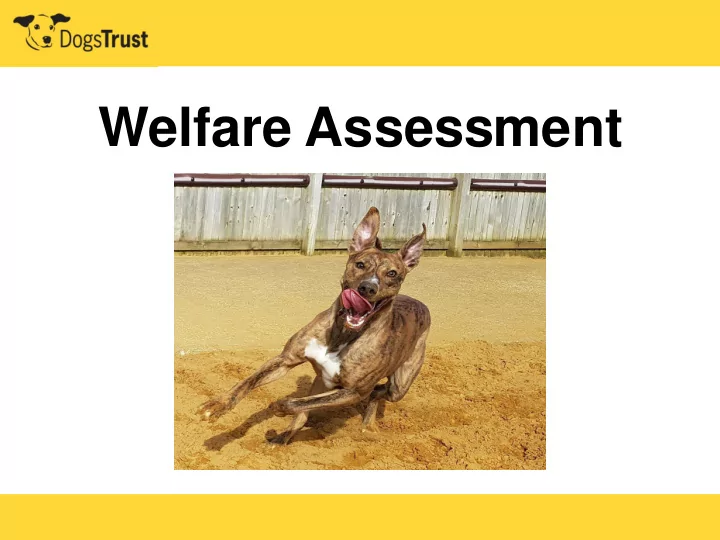

Welfare Assessment
Quality of Life- The Five Freedoms • Need for suitable diet • Need for suitable environment • Need to be able to exhibit normal behaviour patterns • Need to be housed, with or apart from, other animals • Need to be protected from pain, suffering, injury and disease
Priorities • Safety (human and dog) • Welfare • Will these have an impact on safety and/or welfare? ― Dog showing aggression? ― Self mutilation, compulsive behaviour ― Health concerns
Staff safety- why is it important? • If staff or volunteers get bitten they may be off sick or reluctant to return • You could be considered responsible for the injury and potentially held accountable • This in turn could affect you financially and your reputation as an animal shelter
Minimising Risk • Once a dog has been identified as a staff safety risk suitable management protocols need to be put in place • This could involve separation of the dog to an area away from the general population • Reducing the handlers who deal with this dog • Having a Behaviour Modification Programme in place to build trust and a feeling of safety from the dogs point of view.
Records • What do we record, want to record or should record? • Why? • When? • Where? • How? • Context-specific
What are we assessing for? • Type of home • Dogs ability to cope with people • Dog to dog interactions • Ability to cope in kennels? • Needs of the individual • Health • Rehomability • Safety • Welfare
What do humans want from dogs? Everybody has a different expectation • Non-competitive individuals • Low impulsivity • To be tolerant of environmental change • Sociability without dependency • To join multispecies households without any signs of aggression So how will they get it? • Desirable behaviour requires reinforcement • Inconsistency creates problems • Safety is paramount
Does age make a difference? • Do all dogs have the same needs? • What considerations should be made for age? ― Needs? ― Practised behaviour? ― Mobility? • Do we need to assess puppies?
Aggression A dog showing aggression is likely to be welfare compromised • This may be due to fear • This may be due to previous negative experiences with people • This may be due to being in pain or discomfort • This could be enhanced by the environment ― e.g. wanting to avoid something or wanting to defend a resource
Records • Have a system that works for your shelter • Consider ease of use • Ease of identification
Options • Rehome – protocols • Rehab – rehome knowledge • Rehab – maintain in kennels finances/space • Euthanasia - protocols
Recommend
More recommend